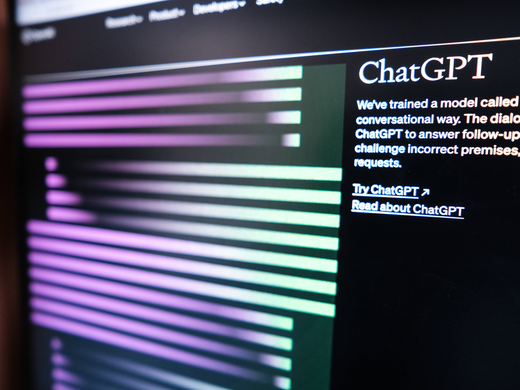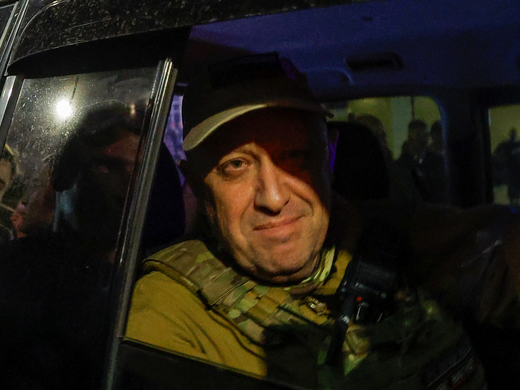Ukraine’s counteroffensive against Russian forces is grinding away. Yet, more than ever, the conflict seems poised to drag on. Aware of this grim reality, Kyiv and its allies are jump-starting efforts to rebuild a country ravaged by 17 months of war. A late June fundraising conference in London saw delegates pledge a combined US$60 billion over five years toward Ukraine’s reconstruction — a mixture of grants, loans and financial guarantees, most of it coming from the European Union. British Prime Minister Rishi Sunak also unveiled a war-risk insurance scheme to mobilize bond purchases and private investment.
Those commitments pale in comparison to what’s required overall. A joint assessment led by the World Bank estimates the cost of rebuilding Ukraine at US$411 billion over 10 years. President Volodymyr Zelenskyy says his country needs at least US$1 trillion. But the scope of the challenge should not obscure the immense strategic value of getting it right. Indeed, Western leaders should be framing the project as one born of self-interest.
For the war, while horrific and tragic, has also been a showcase for Ukraine’s whole-of-society approach to technology. This mindset stems from pre-existing efforts by Zelenskyy’s office — most notably, creating the government’s Ministry of Digital Transformation. It’s a major reason why Ukraine has consistently outperformed expectations on and off the battlefield. According to Karin von Hippel, director-general of the UK-based think tank Royal United Services Institute, some experts suggest Ukraine now trails only the United States and Israel in innovative capacity.
The department’s mandate, when it was established in 2019, was to deliver the world’s most accessible government — a “state in a smartphone” — by 2024. The underlying rationale was to reduce bureaucratic corruption while improving public faith in government. By using the central e-governance platform, Diia, Ukrainian citizens and business owners can personalize how they access hundreds of public services. They can also provide direct feedback on public policy. A national survey in September 2022 showed the platform’s use rate grew from 53 percent of the population in 2020 to 63 percent by 2022, with four in five users reporting a positive experience.
These digital transformation initiatives vastly accelerated with the onset of Russia’s full invasion on February 24, 2022. Crucial state documents and information were immediately migrated to cloud-based servers, in case Kyiv fell. Within three months, each government department had installed its own digital transformation officer. Meanwhile, Diia was enhanced through the rapid addition of new features. The same app used by citizens to insure a vehicle, receive a grant, register a business and file tax returns soon became a means of crowdsourcing intelligence on Russian military actions, purchasing war bonds, requesting evacuation assistance and alerting local officials to property damage. Ukraine’s asymmetrical war effort has been bolstered as well through innovative actions by civil society, which has in essence functioned as a parallel state.
Fast-forward to this past January, when Ukraine’s minister of digital transformation, 32-year-old Mykhailo Fedorov, was named Digital Innovator of the Year at the Future of Government Awards. In his acceptance speech, Fedorov deflected credit: “I am honoured to be recognized for this award,” he said, “but the recognition really belongs to my team at the Ministry and all Ukrainians that have embraced digital pathways as a way to engage with their local and national government.”
While Moscow’s illegal war has caused a massive brain drain in Russia, in Ukraine, a new vanguard of programmers, activists and entrepreneurs is helping Kyiv re-engineer the state for the twenty-first century. The results of this activity — whether it be setting up resilient energy grids, delivering health care to deal with physical and mental traumas, creating countermeasures to foreign propaganda and influence campaigns, or shoring up national cybersecurity — will be revealing. Ukraine’s experience of merging conventional and high-tech weapons with signals intelligence and algorithm-based warfare also gives it unrivalled insight into the new platform military era.
These digital transformation initiatives vastly accelerated with the onset of Russia’s full invasion on February 24, 2022.
With no clear time frame for Ukraine joining the North Atlantic Treaty Organization (NATO), a robust rebuilding effort could provide some strategic clarity. Even if Ukraine ultimately fails to regain all its territory lost since 2014, ensuring it becomes a prosperous and secure advanced democracy compared to its weakened, retrograde neighbour could represent victory in itself. It may even breathe new life into pro-democracy movements within Russia.
Make no mistake: Rebuilding a shattered Ukraine poses a monumental task. Donor countries, led by the United States, have already supported the country with at least US$180 billion in military, financial and humanitarian aid. Citing cost-of-living concerns at home, some Western politicians — especially far-right Republicans in America — are questioning the value of sending taxpayers’ money abroad to support a foreign country embroiled in conflict.
Some eight million Ukrainians, nearly one-fifth of the nation’s pre-war population, have fled as refugees. Another six million are displaced internally within Ukraine, where it’s estimated 17.6 million people will require humanitarian aid in 2023. UN figures indicate at least 26,015 civilians have been killed or wounded — the true total is almost certainly much greater. In addition, US intelligence estimates suggest Ukraine has suffered between 124,000 and 131,000 military casualties.
The country’s economy is severely diminished as well, having contracted by one-third last year. At least 1,900 cities and towns lie in ruins. Domestic telecom operators have lost 4,000 of their mobile base stations and more than 60,000 kilometres of fibre-optic cable. Half of the country’s power grid has been damaged or “totally destroyed,” says Ukraine’s infrastructure minister. And that was before the collapse of the Nova Kakhovka hydroelectric dam on June 6, 2023, due to suspected sabotage — an incident that left one million people without drinking water. Some 30 percent of the countryside is littered with land mines and unexploded shells. This could worsen now that the United States is supplying the Ukrainian military with controversial cluster munitions.
Reversing all this destruction will require financial creativity. The UN General Assembly last November passed a resolution calling for Russia’s violations of international law to be documented in a register for use in calculating war reparations owed to Ukraine.
Yet so long as the Kremlin is under the control of Vladimir Putin — or another strongman — its debts of aggression, even if tallied, will likely go unpaid. Ukraine’s leaders understand this; they have pursued other methods to generate revenue and draw investment, including the sale of state-run companies. A transparent online procurement portal has enabled external actors to bid on public tenders in key sectors such as energy, information and communications technology, manufacturing and transportation.
Alongside a growing chorus of current and former Western officials, Kyiv argues that the roughly US$350 billion in Russian assets seized under sanctions against Moscow should be liquidated to fund a “Marshall Plan for Ukraine.” But despite the proposal’s obvious merits, there are drawbacks. It would be harnessed instantly by the Kremlin’s global propaganda machine as evidence of a Western-led, anti-Russia conspiracy. Moreover, it could spur unintended consequences by setting a dangerous precedent for states to appropriate rivals’ assets for geopolitical gain.
There are also other obstacles and risks. Wariness over Ukraine’s history of organized crime and corruption still lingers — and not without reason. Prior to Russia’s full invasion, Ukraine ranked 122 out of 180 countries in Transparency International’s Corruption Perceptions Index. Sensitive to Ukraine’s image among foreign donors, Zelenskyy’s office has cracked down on graft, to some success. The country’s chief justice was arrested in May as part of a probe into senior Supreme Court officials, allegedly involving multi-million dollar bribes.
Further political reforms are needed to assure foreign investors eyeing opportunities in what the Ukrainian Chamber of Commerce describes as “the world’s largest construction site.” Many of them align with requirements for Ukraine to fulfill its ambitions to join the European Union. The country was granted candidate status in June 2022 but hasn’t yet met the bloc’s legislative standards around minority rights, money laundering, law enforcement and more.
There is also the challenge of simply processing all the incoming funds. “Historically the largest amount of money we have been capable of working with was $6bn a year in 2014,” cautioned Mustafa Nayyem, the head of the Ukraine State Agency for Restoration and Infrastructure Development, in a recent interview. “Now we are expecting much more, and it will be very difficult for the Ukrainian construction industry, government institutions and private institutions to deliver this result.”
More broadly, a rapid rebuilding effort for Ukraine may harden anti-Western resentments in the Global South. India’s foreign minister, Subrahmanyam Jaishankar, has criticized this as a paradigm where “Europe’s problems are the world’s problems but the world’s problems are not Europe’s problems.” To offset this risk, liberal democracies must launch in developing countries parallel outreach efforts focused on enabling democracy-agnostic improvements to service delivery that can unlock economic growth. Another option is to push for reforms to the UN Security Council to make it more inclusive and reflective of emerging changes to the international balance of power.
Arguably, the most opportune time to make dramatic changes is during a crisis. Thankfully, for Western countries, Ukraine’s reconstruction affords them the chance to learn wartime lessons on how to digitally reshape governance — without first having to endure the horrors of conflict themselves.
A version of this article was first published by The Hill.



